Valley of Flowers Trek 2025: Complete Itinerary, Best Time & Difficulty Guide
Published on July 08, 2025
Valley of flowers tour package, Are you dreaming of walking through a vibrant carpet of wildflowers nestled in the Himalayas? The Valley of Flowers Trek is one of India’s most breathtaking natural wonders — a UNESCO World Heritage Site known for its mesmerizing alpine flora, serene landscapes, and spiritual aura.
Whether you're a first-time trekker or an experienced adventurer, this guide will help you plan your Valley of Flowers Trek 2025 with clarity. From the best time to visit , difficulty level , and detailed itinerary , to the best Valley of Flowers Tour Packages , we’ve got everything covered.
Let’s dive into it!
What Makes the Valley of Flowers So Special?
Tucked away in the Chamoli district of Uttarakhand, the Valley of Flowers is a high-altitude Himalayan meadow that bursts into life every summer. This magical valley is not only a visual treat but also a haven for botanists, trekkers, and nature lovers alike.
Unlike any other place on Earth, the Valley of Flowers changes its colors with the seasons, offering a unique experience each year. With over 600 species of alpine flowers, snow-capped peaks, and the soothing sound of the Pushpawati River flowing through, it's no wonder this destination is often described as paradise on Earth.
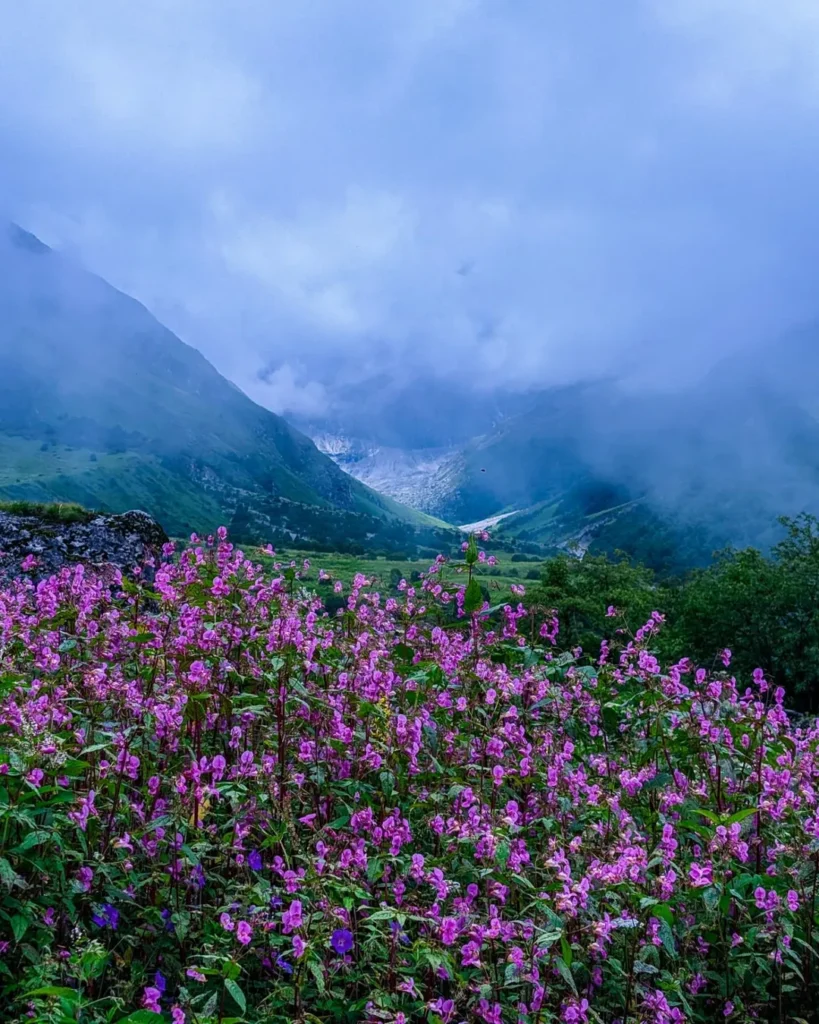
Valley of Flowers Itinerary 2025: A Perfect 6-Days Tour Plan with TourMyHoliday
Day 1: Arrival in Rishikesh & Drive to Govindghat / Pipalkoti
- Arrive at Rishikesh , the yoga capital of the world, known for its serene vibes and spiritual energy.
- After breakfast, meet your tour representative at The 60s Cafe (The Beatles Café) — a nostalgic start point of your Himalayan journey.
- Begin your scenic drive towards Govindghat / Pipalkoti (approx. 280 km, 8–9 hours), passing through charming hill towns like Vikasnagar, Chinyalisaur, and Joshimath .
- En route, enjoy breathtaking views of snow-capped peaks, deep gorges, and flowing rivers like the Alaknanda and Pindar .
- On reaching Govindghat, check into your pre-booked accommodation.
- Rest and relax for the night, preparing for the trekking days ahead.
Overnight Stay: Govindghat / Pipalkoti
Day 2: Trek from Govindghat / Pipalkoti to Ghangaria (14 km / 7–8 hrs)
- Post an early breakfast, begin your ascent towards Ghangaria , a key base camp for trekkers heading to both the Valley of Flowers and Hemkund Sahib .
- The trail follows the Bhyundar Valley , winding through dense forests of rhododendron and oak, alongside the roaring Pushpawati River .
- Cross several small wooden bridges and witness cascading waterfalls and natural hot springs along the way.
- Reach Ghangaria , a quaint mountain village nestled between two glacial streams, and check into your guesthouse or dormitory.
- Spend the evening exploring the surroundings or relaxing in this tranquil setting.
Overnight Stay: Ghangaria
Day 3: Full-Day Exploration of Valley of Flowers
- Rise early and head out for the much-awaited visit to the Valley of Flowers , located about 3 km from Ghangaria.
- As you enter this UNESCO World Heritage Site, be mesmerized by a vibrant carpet of wildflowers in every shade imaginable — from dazzling reds and purples to soft pinks and yellows.
- Walk through the valley, soaking in the fragrance of alpine flora, and capturing stunning photographs of rare blossoms and butterflies fluttering around.
- Visit the Pushpavati River and enjoy a peaceful sit-down amidst nature.
- Return to Ghangaria in the afternoon for some rest.
- Optional: Visit the nearby Sindhu Ghati Park , another floral attraction slightly off the main trail.
Overnight Stay: Ghangaria
Day 4: Trek to Hemkund Sahib & Back to Ghangaria
- Wake up early and set off for the holy Sri Hemkund Sahib Gurudwara , situated at an altitude of 4,329 meters.
- The trek is steep and moderately challenging (approx. 6 km one-way), passing through rocky terrain and pine forests.
- Upon reaching the gurudwara, experience the spiritual serenity and marvel at the pristine glacial lake beside it.
- Spend time in prayer or simply absorbing the majestic views of surrounding peaks like Mount Nanda Devi .
- Descend back to Ghangaria in the afternoon, where you can unwind and prepare for the return journey.
Overnight Stay: Ghangaria
Day 5: Descent Trek from Ghangaria to Govindghat / Pipalkoti
- Today marks the end of your trekking days. Start your descent back to Govindghat / Pipalkoti .
- The downhill trek (approx. 14 km) is relatively easier and allows you to enjoy the panoramic views without the effort of climbing uphill.
- Take breaks at scenic spots, reflect on your Himalayan journey, and click last-minute pictures.
- On reaching Govindghat, board your waiting vehicle for a relaxing drive back to Rishikesh .
- Overnight halt en route or continue driving depending on time and road conditions.
Overnight Stay: On the way or reach Rishikesh late night (depends on traffic)
Day 6: Transfer to Rishikesh & Departure
- After a refreshing night’s sleep, proceed towards Rishikesh , concluding your soul-stirring Himalayan adventure.
- On arrival in Rishikesh, you may choose to explore local attractions like Lakshman Jhula , Triveni Ghat , or enjoy a peaceful session of meditation or yoga.
- Later, transfer to your onward destination — whether it’s the airport, railway station, or bus stand.
End of Tour
.jpeg)
What’s Included in Your Valley of Flowers Itinerary with TourMyHoliday?
Planning a trek to one of the most stunning destinations on Earth should be as effortless as it is magical. That’s why every TourMyHoliday Valley of Flowers package is crafted with care — blending adventure, comfort, and unforgettable moments. Here’s what makes your journey seamless:
Scenic Transfers (Wherever Applicable)
- Shared or private cab transfers from Rishikesh / Haridwar to Govindghat and back
- Helicopter booking assistance (optional add-on)
Comfortable Stay Along the Trail
- Cozy accommodations in Ghangaria – clean guesthouses or camps with basic amenities
- Warm meals served at lodges or camps (veg only)
Nourishing Meals on the Go
- Freshly cooked breakfast, lunch, and dinner during the trek
- Hot tea/snacks during transit
Expert Local Trek Guide
- Certified, friendly, and experienced local guide to lead the way
- Knowledgeable about flora, fauna, and local legends
All Permits & Entry Registrations
- Hassle-free processing of National Park entry permits
- Trek registration support included
Luggage Safety & Security
- Free storage facility for extra luggage at base camp (Govindghat/Rishikesh)
Basic Toilet & Washroom Facilities
- Functional washrooms available at Ghangaria guesthouses/camps
Emergency Support
- 24x7 support team on call for medical or logistical help
- First aid kit always carried by the guide
Insightful Pre-Trek Briefing
- Do’s and Don’ts shared before departure
- Packing list and weather updates provided
What to Pack for the Valley of Flowers Trek – Your Ultimate Packing List with TourMyHoliday
Packing smart can make or break your trekking experience. The Valley of Flowers is a high-altitude Himalayan paradise, which means unpredictable weather, rocky trails, and breathtaking moments that call for the perfect lens (and lens cap!).
To help you prepare like a pro, here’s our TourMyHoliday-approved packing list — curated from years of guiding trekkers through this floral wonderland.
Clothing Essentials – Layer Up, Stay Warm!
Think mountains = cold mornings, warm afternoons, and sudden showers.
- Thermal innerwear (top & bottom)
- Fleece jacket or sweater
- Waterproof/down jacket
- Quick-dry trek pants (avoid jeans!)
- Trek-friendly t-shirts (moisture-wicking preferred)
- Gloves (for chilly mornings)
- Warm woolen cap or beanie
- Bandana or scarf (to protect from dust or sun)
Footwear – Step Right into Adventure
Your feet will thank you later.
- Trekking shoes (broken-in, waterproof, and grippy soles)
- Extra pair of socks (woolen + quick-dry)
- Camp shoes or flip-flops (for resting at night)
Backpack & Accessories – Carry Only What You Need
- Daypack (30–40 L) with rain cover
- Rain poncho or lightweight raincoat
- Trekking pole (highly recommended for steep sections)
- Sunglasses with UV protection
- Sunscreen SPF 50+
- Lip balm with SPF
- Water bottle / hydration bladder (2–3 L capacity)
- Power bank (limited charging available)
- Headlamp or small torch (with extra batteries)
Health & Safety – Better Safe Than Sorry
- Basic first aid kit (blister bandages, painkillers, ORS, etc.)
- Personal medicines (labelled and handy)
- Hand sanitizer
- Wet wipes / toilet paper
- Face mask (optional but useful for dust)
- Nasal spray or steam inhaler (helps with altitude dryness)
Optional But Recommended – For the Experience
- Camera or GoPro (don’t miss the blooms!)
- Binoculars (great for birdwatching)
- Journal or sketchbook (capture thoughts or nature art)
- Dry bag or ziplock pouches (to keep things safe from rain)
- Snacks (energy bars, chocolates, dry fruits)
Personal Toiletries – Keep Fresh on the Trail
- Travel-sized toothpaste & brush
- Biodegradable soap
- Quick-dry towel
- Wet wipes
- Toilet paper (yes, it runs out!)
Final Tips – Pack Light, Pack Right
- Avoid cotton-heavy outfits (they take forever to dry).
- Label your belongings.
- Use packing cubes or dry bags to organize.
- Don’t forget your ID proof and permit copy.
- Leave no trace – carry all waste back with you.

When Nature Dances: Understanding the Weather in the Valley of Flowers
Tucked high in the Himalayas, the Valley of Flowers isn’t just known for its riot of colors — it has a climate as unique as its landscape. If you're planning to visit this floral paradise in 2025 , understanding the weather patterns can help you prepare better and experience the magic at its peak.
Let’s take a closer look at what kind of weather you can expect during different seasons and how it shapes your trekking journey.
Summer Season (June – September): The Bloom & The Showers
This is when the valley truly comes alive — a dreamy explosion of wildflowers stretching as far as the eye can see.
- Temperature : 10°C to 20°C during the day, dropping to around 5°C at night.
- Weather Conditions : Mild days with occasional drizzles. Mornings can be misty, adding to the ethereal charm.
- What to Expect : Lush green trails, blooming meadows, and the Pushpawati River flowing with melted snow.
Autumn Season (October): Farewell to Flowers
As the season winds down, the flowers begin to retreat, but the views become sharper, the skies clearer, and the air crisper.
- Temperature : Drops to 0°C at night, with daytime temperatures between 8°C to 12°C.
- Weather Conditions : Cold but clear skies. Occasional snowfall towards the end of October signals the closure of the park.
Winter Season (November – May): A Frozen Fairy Tale (But Off-Limits)
During these months, the Valley of Flowers remains closed due to heavy snowfall.
- Temperature : Often below freezing, sometimes reaching -10°C.
- Weather Conditions : Blanketed under thick snow, the valley becomes inaccessible to regular trekkers.
Altitude & Weather: What You Should Know
At an elevation of around 3,600 meters , the weather in the Valley of Flowers can change quickly. Even on a sunny day, temperatures can drop unexpectedly.
Here’s how to stay prepared:
- Carry warm layers even in summer.
- Pack a rain poncho or waterproof jacket.
- Wear sunglasses and apply sunscreen regularly — UV rays are stronger at altitude.
- Keep a headlamp handy; evenings get dark early.
Best Time to Visit Valley of Flowers in 2025
Timing is everything when it comes to visiting the Valley of Flowers . The window is short but spectacular.
Ideal Months: June to October
- June – July : Early bloom season. You’ll see the first signs of color with white and yellow flowers.
- August – September : Peak blooming season. The entire valley is painted in vibrant hues of red, blue, purple, and pink.
- October : Late season. The flowers start to fade, but the views are still stunning and the crowds are fewer.
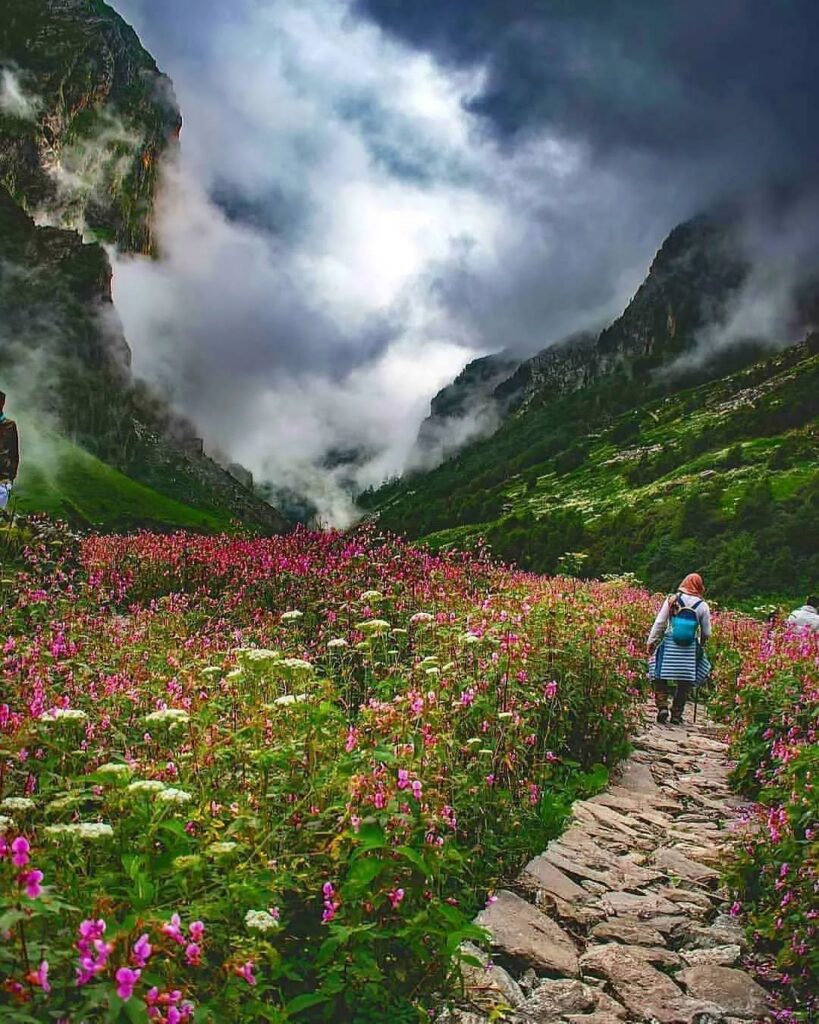
Difficulty Level of the Valley of Flowers Trek
This trek is considered moderate , making it accessible to both beginners and seasoned hikers.
Trek Distance:
- Approximately 14 km (round trip) from Govindghat to the Valley of Flowers.
Duration:
- 2 full days (Day 1: Govindghat to Ghangaria | Day 2: Ghangaria to Valley of Flowers and back)
Altitude:
- Ghangaria : ~3,050 meters
- Valley of Flowers : ~3,600 meters
Key Challenges:
- Steep ascent in parts
- Rocky and uneven terrain
- High altitude (may affect those not acclimatized)
How to Reach the Valley of Flowers
Reaching the Valley of Flowers involves a mix of road and trekking. Here's how to get there based on your starting point:
From Delhi:
- Take a train or bus to Haridwar or Rishikesh .
- Drive to Govindghat (via Rishikesh → Haridwar → Rudraprayag → Karnaprayag → Bageshwar → Joshimath).
- Total Distance : ~300 km from Rishikesh.
From Mumbai:
- Fly or take a train to Delhi , then follow the same route as above.
From Rishikesh:
- Direct road journey to Govindghat (12–14 hours).
Helicopter Option:
- Book a helicopter ride from Govindghat to Ghangaria to reduce trekking distance (available during peak season).
Cost of Valley of Flowers Tour Packages
The cost varies depending on the type of package, duration, group size, and inclusions.
Approximate Price Range:
- Basic Trek Package : ₹15,000 – ₹20,000 per person
- Luxury/Guided Tour : ₹25,000 – ₹40,000 per person
- Helicopter Packages : ₹40,000 – ₹70,000 per person
Spiritual Significance of the Valley of Flowers
Beyond its natural beauty, the Valley of Flowers holds deep spiritual significance. Legend has it that Hanuman used this route while carrying the Sanjeevani Booti to revive Lakshman. Nearby lies Hemkund Sahib , a revered Sikh pilgrimage site.
Many visitors combine the Valley of Flowers Trek with a visit to Hemkund Sahib , making it both a physical and spiritual journey.
Photography Tips for the Valley of Flowers
The Valley of Flowers is a photographer’s dream. Here are some tips to capture the magic:
- Use a wide-angle lens to capture the vastness.
- Shoot early morning or late afternoon for golden light.
- Include people or wildlife (like butterflies) for scale and life.
- Experiment with macro shots of individual flowers.
- Don’t forget the surrounding mountains and streams.
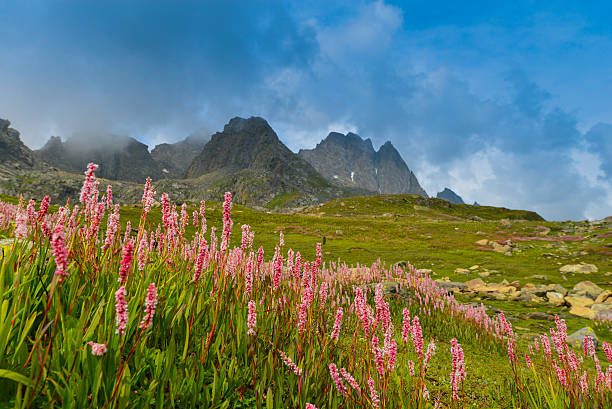
Who Can Go on the Valley of Flowers Trek?
This trek is suitable for:
- Families with children aged 10+
- Solo travelers
- Adventure enthusiasts
- Nature photographers
- Pilgrims visiting Hemkund Sahib
However, it’s not recommended for:
- People with severe respiratory issues
- Those with heart conditions
- Elderly without prior trekking experience
Accommodation Options
You’ll find various types of stays along the route:
- Guesthouses in Ghangaria
- Basic lodges
- Camping options (for premium packages)
Combining with Other Treks and Destinations
The Valley of Flowers Trek pairs well with:
- Hemkund Sahib Trek
- Auli Ski Resort
- Joshimath
- Badrinath Temple
- Nanda Devi National Park
Many Valley of Flowers fixed departures include these destinations for multi-day adventures.
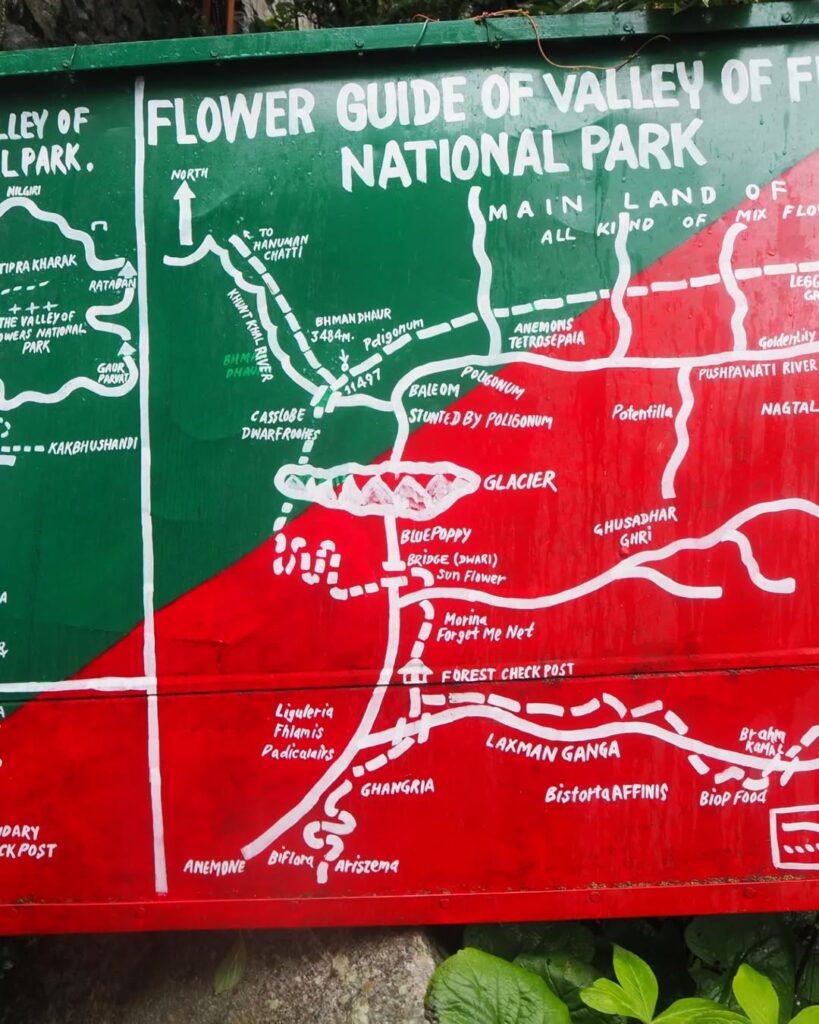
Where Wildflowers Meet Warmth: A Peek into Accommodations in the Valley of Flowers
Trekking through the Valley of Flowers is like stepping into a dream — but where do you rest your head after a long day of wandering among blossoms?
Unlike luxury resorts or boutique hotels, the accommodation here is simple, rustic, and deeply rooted in mountain life. It’s not about extravagance; it’s about comfort amid nature , warmth in simplicity , and authenticity in every stay .
Let’s explore what kind of places you’ll call home during your floral adventure.
Ghangaria: Your Basecamp of Comfort
The main accommodation zone lies in Ghangaria , a small hamlet located about 3 km from the entrance of the Valley of Flowers. At an altitude of 3,050 meters , Ghangaria isn’t just a pit stop — it’s a charming highland village with a soul of its own.
Here’s what you’ll find:
Guesthouses & Lodges:
- Run by locals, these are basic but clean.
- Rooms are often dormitory-style or twin-sharing with attached or common washrooms.
- Expect wooden beds, thin mattresses, and warm quilts (bring your own sleeping bag if possible!).
Camping Options:
- For those seeking a more immersive experience, eco-camps and luxury tents are available through select tour operators like TourMyHoliday .
- These come with proper bedding, dining tents, and even hot meals under the stars.
- Pro Tip: Meals are usually included in packages — think hearty dal, rice, roti, and steaming chai. Vegetarian only, so plan accordingly.
What Makes These Stays Special?
It’s not the amenities that make Ghangaria unforgettable — it’s the experience .
- Mountain views from your window
- Peaceful mornings filled with birdsong
- Campfires under starlit skies
- Warm conversations with fellow trekkers
- Simple joys like sipping tea as mist rolls over the hills
There’s no Wi-Fi, no room service, and no distractions — just pure, unfiltered connection with nature and yourself.
Storage & Luggage Tips
Since you’ll be trekking into the valley, most guesthouses and camps offer free luggage storage for items you don’t need on the final leg of the journey.
This means:
- Leave your extra clothes and valuables safely behind
- Trek light with just essentials in your daypack
- Return to your belongings exactly where you left them
A Note on Hygiene & Facilities
While cleanliness has improved over the years, don’t expect hotel-level facilities. Most bathrooms are functional but basic, with bucket water or solar-heated showers.
That said:
- Many lodges now have western-style toilets
- Hand sanitizers and wet wipes are a must-have
- Charging points are limited — bring a power bank
Stay Simple, Live Deeply
Accommodation in the Valley of Flowers isn’t about luxury — it’s about living close to the land, slowing down, and embracing the rhythm of the mountains.
At TourMyHoliday , we believe that where you sleep matters less than how deeply you feel the magic around you. And in Ghangaria, every night feels like a lullaby sung by the Himalayas.

Where Earth Wears Its Best Dress: A Journey into the Enchanted Valley of Flowers
Tucked high in the folds of the Himalayas lies a place where nature doesn’t just bloom — it dances, dazzles, and dreams aloud. Welcome to the Valley of Flowers , a UNESCO World Heritage Site that feels less like a destination and more like a living painting.
This isn’t just another trekking spot. It’s where wildflowers carpet the mountainsides in impossible colors, where the air smells of earth and snow, and where time seems to pause just long enough for you to breathe deeply and remember how beautiful the world can be.
A Hidden Paradise Unfolds
Nestled at an altitude of around 3,600 meters in the Uttarakhand region of India , the Valley of Flowers is a high-altitude Himalayan meadow that bursts into life every summer. It’s one of those rare places where reality outshines imagination.
Legend says this valley was discovered by British explorers in 1931 — though locals had known about its beauty for centuries. Today, it remains a sanctuary not just for trekkers and photographers, but also for botanists, pilgrims, and dreamers drawn by the promise of untouched wilderness.
A Symphony of Color and Life
From mid-June to October, the valley transforms into a riot of color. Picture fields of:
- Braunaria
- Primulas
- Daisies
- Orchids
- Marigolds
- The elusive Blue Poppy
Each step reveals a new shade, a new scent, a new reason to fall in love with nature all over again.
And if you're lucky, you might even spot the sacred Brahma Kamal , believed to bloom only for those who are truly pure of heart.
More Than Just Flowers — A Spiritual Landscape
The Valley of Flowers isn’t just a visual treat — it’s a spiritual experience. Nearby lies Hemkund Sahib , a revered Sikh pilgrimage site perched at 4,632 meters, making this region a confluence of natural beauty and divine energy.
Many visitors combine the Valley of Flowers Trek with a visit to Hemkund, turning their journey into both a physical and soulful adventure.
Who Can Go?
While the trek is considered moderate , it’s best suited for those with average fitness levels and a willingness to embrace the mountain way of life.
- Distance : Around 14 km round trip from Govindghat
- Altitude : Up to 3,600 meters
- Duration : 2–3 days
Whether you’re a solo traveler, a couple seeking a quiet escape, or a family looking for a meaningful adventure, there’s a version of this trek for you.

The Valley Remembers Every Step You Take
As you pack your memories — the scent of wild blossoms, the echo of mountain winds, the quiet hum of nature’s rhythm — remember this: the Valley of Flowers isn’t just a place you visit. It’s a story you become part of.
It doesn’t ask for much — just your presence, your respect, and your wonder.
Whether you came chasing color, seeking solitude, or simply to feel something real, the valley gives back tenfold. It gifts you silence deep enough to hear your own heartbeat, skies wide enough to forget your worries, and flowers bright enough to light up your soul.
And when you leave, tired but fulfilled, dusty but grateful, you’ll realize something quietly magical:
You didn’t just walk through the Valley of Flowers trek package…
…you bloomed in it.
So until your next adventure — keep wandering, keep wondering, and let the mountains remind you how small you are, and how big your heart can be.
With love from the Himalayas,
TourMyHoliday
Frequently Asked Questions:
1. Is the Valley of Flowers really as magical as it looks in pictures?
Yes, it often feels even more magical in person — the colors, sounds, and serenity create an unforgettable experience.
2. I’m not super fit — can I still do this trek?
Yes, the trek is moderate and suitable for people with average fitness. Preparation and pacing help a lot.
3. What happens if it rains during my visit?
Light rain adds charm to the trek. Heavy rain is rare here, but it’s wise to carry waterproof gear just in case.
4. Can I bring my drone or professional camera into the valley?
Drones are generally not allowed without special permission. Cameras are welcome — the valley is a photographer’s delight.
5. Is it a good destination for couples or romantic getaways?
Yes, it offers a peaceful and scenic setting ideal for couples who enjoy nature and quiet adventures.
6. Can kids go on this trek?
Children above 10 years old can join if they're active and accompanied by adults.
7. Will I see any animals or birds in the Valley of Flowers?
You may spot butterflies, marmots, blue sheep, and some Himalayan bird species like rosefinches and snow pigeons.
8. Is there any spiritual significance to this place?
Yes, the valley is linked to Hanuman’s journey and lies near Hemkund Sahib, a sacred Sikh pilgrimage site.
9. What if I don’t want to trek — are there alternatives?
Yes, you can take a helicopter from Govindghat to Ghangaria to reduce walking distance.
10. What makes the Valley of Flowers different from other Himalayan treks?
It focuses on natural beauty and calm rather than physical challenge — a unique celebration of alpine flora and peace.
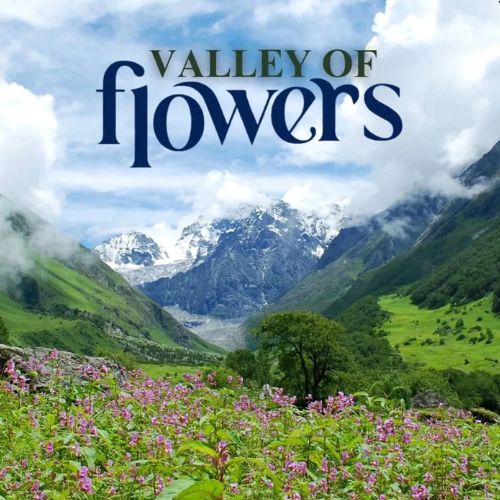
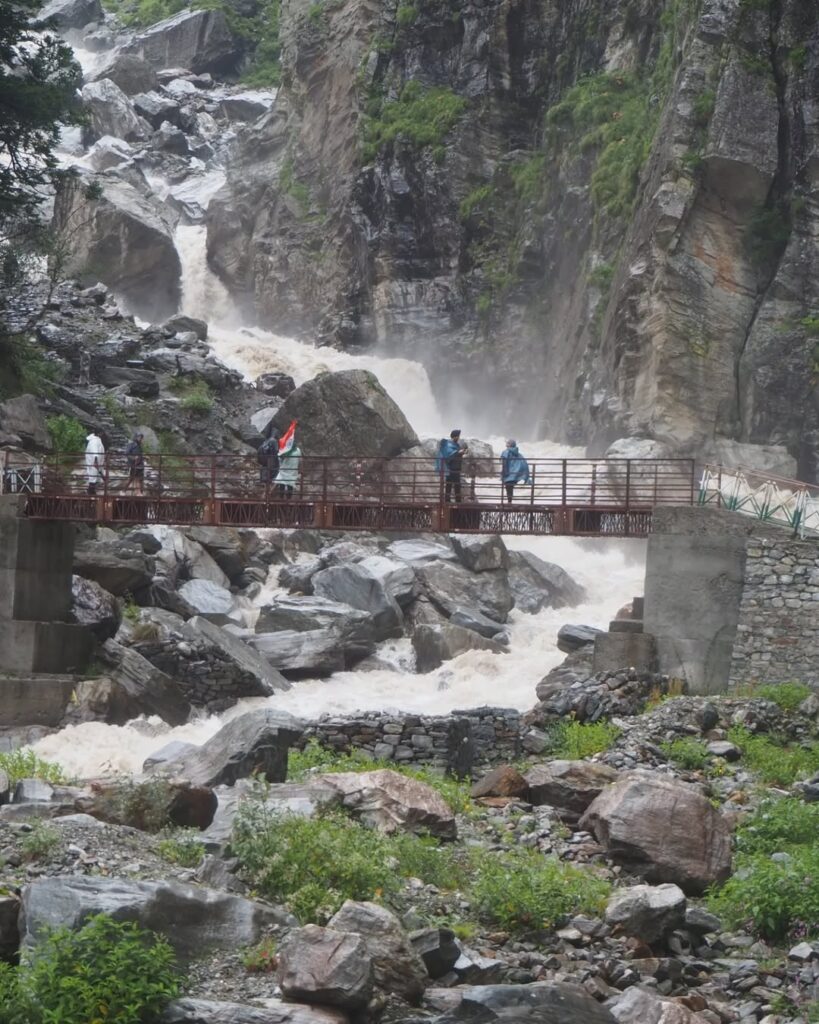

.jpg)
